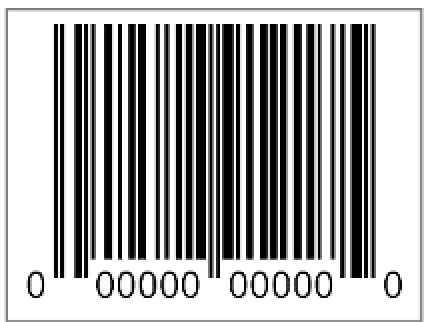Graphics Reference
In-Depth Information
Bar codes are a series of horizontal or vertical parallel lines representing a code that can
be optically read and interpreted by a bar code scanner. Bar coding is used on packaging
to speed up pricing at checkout.
• Bar codes must be positioned in a spot that is highly visible and easily scanned.
• A bar code must be printed at a scale between 85% and 120% of its original size.
• Bar codes must be printed in dark colors (dark shades or blue-black and brown or
black) against a solid light colored background. (See the following section, Guide to
Color-Correct Bar Coding, for more specific information on which colors are readable
when printed on common paperboard surfaces.)
• Bars must be printed in a solid color, not screen values of spot colors or screened
blends of process colors.
• Bar codes against a colored field must have a color-free area that extends no less
than
3
⁄
32
” (2.4 m) beyond the printed bar code.
• To guard against ink spread, bars should run vertically across the rollers on a web
press.
1
1
⁄
8
”
(1.125”)
(29 mm)
1
9
⁄
32
”
(1.59375”)
(41 mm)
100% NOMINAL
Minimum Free Space



















































Search WWH ::

Custom Search